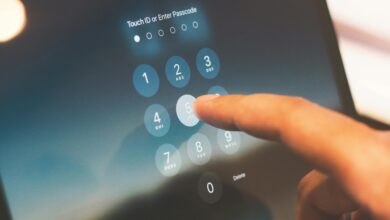The Best Cybersecurity Practices for Social Media Users: Protecting Your Digital Presence

Social media has become an integral part of our daily lives, connecting us with friends, family, and professional networks. However, it also presents significant cybersecurity risks, including identity theft, phishing attacks, data breaches, and unauthorized access to personal information. To safeguard your digital presence, it’s essential to adopt strong cybersecurity practices tailored specifically for social media. In this article, we’ll explore the best strategies to protect yourself while using platforms like Facebook, Instagram, LinkedIn, Twitter, and others.
Why Cybersecurity Matters on Social Media
Cybercriminals often target social media users because these platforms contain vast amounts of personal data, making them prime targets for scams, fraud, and malicious activities. Without proper precautions, you could inadvertently expose sensitive information or fall victim to cyberattacks. By implementing robust security measures, you can minimize risks and enjoy a safer online experience.
1. Strengthen Your Passwords
Use Strong, Unique Passwords
Weak passwords are one of the most common vulnerabilities exploited by hackers. Follow these guidelines:
- Create complex passwords that include uppercase letters, lowercase letters, numbers, and symbols.
- Avoid using easily guessable information like birthdays, names, or common phrases.
- Use a unique password for each social media account to prevent widespread compromise if one account is breached.
Enable Two-Factor Authentication (2FA)
Two-factor authentication adds an extra layer of security by requiring a second form of verification—such as a text message code or authentication app—before granting access to your account. Most major social media platforms support 2FA, so enable it wherever possible.
2. Be Cautious About Sharing Personal Information
Limit What You Share
Avoid posting sensitive details that could be used against you, such as:
- Your home address or location in real-time.
- Financial information, including bank account numbers or credit card details.
- Private contact information like phone numbers or email addresses.
Adjust Privacy Settings
Regularly review and update the privacy settings on your social media accounts to control who can see your posts and profile information. Opt for “private” or “friends-only” visibility whenever possible.
3. Recognize and Avoid Phishing Scams
Spot Suspicious Links and Messages
Phishing attacks frequently occur via direct messages, emails, or fake advertisements disguised as legitimate content. Be wary of:
- Unsolicited messages asking for personal information or login credentials.
- Links claiming to lead to exclusive offers, contests, or urgent updates.
- Requests to verify your account through unfamiliar websites.
Verify Before Clicking
Before interacting with any link or attachment:
- Hover over the link to preview its URL and ensure it matches the official website.
- Contact the sender directly (outside of the platform) to confirm authenticity.
- Report suspicious activity to the social media platform immediately.
4. Keep Software Updated
Update Apps and Devices
Outdated software may contain vulnerabilities that hackers can exploit. Ensure that:
- Your social media apps are always updated to the latest version.
- Your operating system and antivirus software are current.
Enable Automatic Updates
To stay protected without manual effort, enable automatic updates for all devices and applications.
5. Secure Your Accounts from Unauthorized Access
Monitor Account Activity
Regularly check your account activity logs for signs of unauthorized access, such as unfamiliar logins or changes to settings. If you notice anything suspicious:
- Change your password immediately.
- Notify the platform’s support team.
- Review connected third-party apps and revoke permissions for those you no longer use.
Log Out of Shared Devices
If you’ve accessed your social media accounts on shared or public devices, always log out after use to prevent others from gaining access.
6. Educate Yourself About Common Threats
Understand Social Engineering Tactics
Hackers often manipulate users into revealing confidential information through deception. Examples include:
- Impersonating trusted contacts or brands.
- Creating fake profiles to gain trust.
- Exploiting emotions like fear, curiosity, or excitement.
Stay Informed
Follow reputable cybersecurity blogs, news outlets, and social media channels to stay updated on emerging threats and prevention tips.
7. Think Twice Before Accepting Friend Requests
Verify New Connections
Fake profiles are commonly used to gather personal information or spread malware. Before accepting friend requests:
- Confirm the person’s identity through mutual connections or offline communication.
- Look for red flags, such as minimal profile activity or generic profile pictures.
Limit Public Interactions
Restrict interactions with strangers to reduce exposure to potential threats.
8. Backup Important Data
Save Valuable Content
In case of a compromised account or accidental deletion, back up important photos, videos, and documents stored on social media platforms. Many platforms offer export features for downloading your data.
Store Backups Securely
Save backups in encrypted cloud storage or offline drives to protect them from unauthorized access.
9. Use Trusted Networks
Avoid Public Wi-Fi
Public Wi-Fi networks are often unsecured, making it easier for attackers to intercept your data. When accessing social media in public:
- Use a virtual private network (VPN) to encrypt your connection.
- Avoid logging into accounts unless absolutely necessary.
Secure Your Home Network
Protect your Wi-Fi router with a strong password and encryption protocol (e.g., WPA3). Regularly update firmware to patch known vulnerabilities.
10. Report and Block Suspicious Accounts
Take Action Against Threats
If you encounter suspicious behavior, such as harassment, impersonation, or spam:
- Report the account to the platform administrators.
- Block the user to prevent further interaction.
Advocate for Safe Online Communities
Encourage friends and followers to practice good cybersecurity habits and report harmful content.




